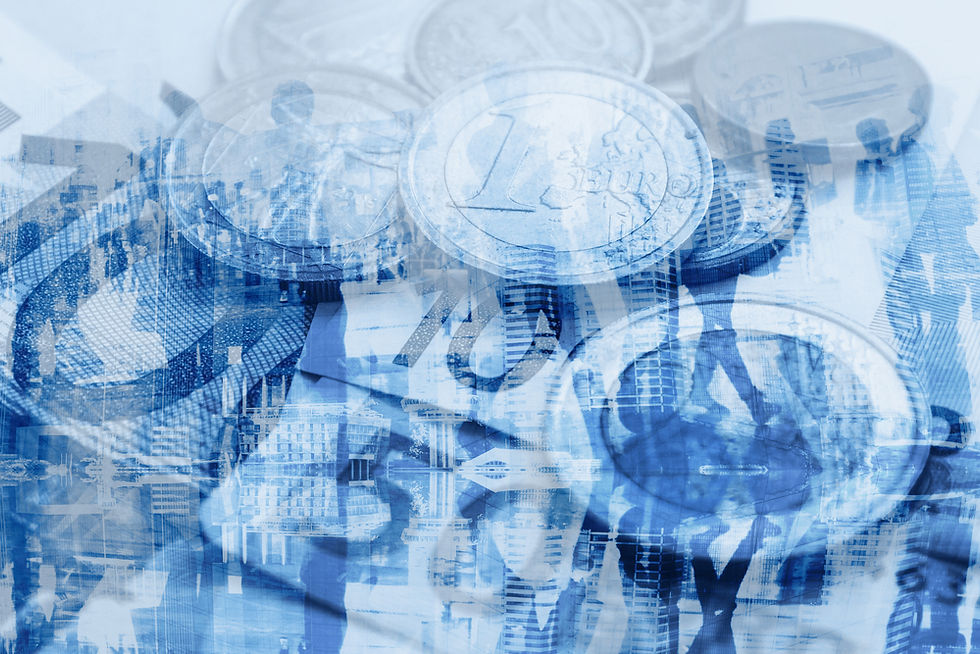The Importance of Price
- NYee
- Feb 20, 2021
- 3 min read

One thing that does not seem to matter very much to investors today is price.
By price I mean the amount paid for an asset in relation to some quantifiable metric, which is also known as “valuation.” In stock investing, many investors use earnings, or some variation of earnings, and compare that to price to get a sense of valuation. Or they use dividends – the portion of a company’s earnings distributed to owners. Or maybe they use sales. There are other metrics of course, depending on the business and industry.
We can do this with just about any asset. Take bonds, for instance, where different measures of “yield” are simply a way to compare a bond’s future cash flows to its price. Or real estate, where “cap rate” is just a way to compare the income from a property to its price. And we can even do this with non-earning assets, like gold, where we might compare price to economic activity (e.g., GDP) or measures of money supply.
Why do we compare price to other metrics? It’s really a short-hand way to try to understand whether the asset is expensive or not. We can assess how expensive an asset is relative to its own history. Or we can assess how expensive an asset is relative to investment alternatives. Of course, real valuation work is more detailed and complex. But short-hand versions, like yield for a bond, or price/earnings for a stock, or price/GDP for the stock market, can give us a rough understanding of whether we are paying a high price or a low price.
Today, investors do not seem to pay much regard to price. Actually, one can make the case that investors haven’t been paying any regard to price for many years. Writing in the Wall Street Journal(1), James McIntosh referenced a “bubble portfolio” constructed by a fund manager in mid-2017. The portfolio included nine different investments whose valuations were considered so high as to be in “bubble” territory – stocks like Netflix and Tesla. So, this was a collection of stocks and assets as of mid-2017 that an astute, long-term investor might seek to avoid, knowing it would be extremely unlikely for future cash flows to justify such prices.
Now here’s what happened: for the next two and a half years, that portfolio did not do particularly well. Tesla, for example, traded below its mid-2017 price for most of that time. So far, nothing surprising. But then the pandemic arrived. And suddenly, price did not matter. Tesla’s stock increased 8x in 2020. And that “bubble portfolio” is up more than 3x since mid-2017, easily beating the S&P 500 index.
The lesson that many investors have learned over the last five + years is that price, or valuation, is irrelevant. Just buy the things that are growing the fastest and/or most popular. Doing so has been remarkably rewarding (though less so for those that bought into the hype around certain stocks over the last month or two).
“As usual the bubble stocks have a good story to tell about new technology and major shifts in consumption. They are helped by the super low bond yields engineered by central banks. But their valuations and the scale of the price moves are extreme and probably unsustainable.”(1)
As we’ve highlighted to our clients, the most expensive 10% of companies in the S&P 500 index now trade at price/sales valuations comparable to the late 1990s. Those valuation levels were certainly not sustained. So count us in the “probably unsustainable” camp. Hard as it is to stand by while others enjoy remarkable profits, we have no interest in the FOMO (Fear of Missing Out) game and are content to march to our own drum, with our own scorecard. One day, price will matter again. I don’t know what the trigger will be (could a major sustained global cybersecurity attack dampen enthusiasm for all things digital or combined Federal Reserve/fiscal policy bring dollar purchasing power into focus, or lack of investment in commodities production for the last seven years lead to demand/supply imbalances, or…) or when.
I just know I want to be prepared when that time inevitably comes.



Comments